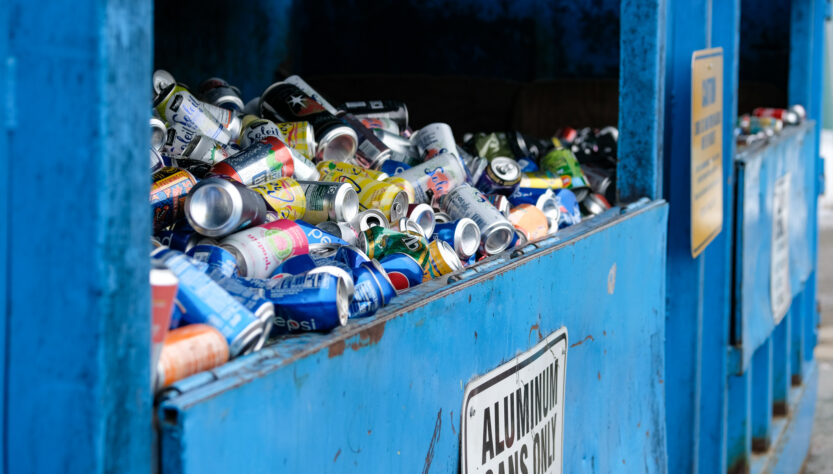A team effort between retail stores, shipping companies, and policymakers
Illustration by @hevendemo
Glass bottles rattle and shift as car tires scrape the rough asphalt. People move fast and no one says a word. Heaps of cardboard are flung into one of the 12 recycling containers that WestRock Recycling has available for Anchorage residents.
The delivery of recyclable materials to sorting and processing facilities in the Lower 48 is a feat of coordinated ingenuity that Alaskans should be proud of. Participating in the recycling industry has been a challenge from the start.
Anchorage is best thought of as a collection and shipping point of the state’s recycled material or recovered fiber. Most of it ends up in the large-scale sorting and materials recovery facilities in Washington, some of it reaching as far as Kentucky before being processed.
A state of just over 700,000 people isn’t large enough to house its own sorting facility. It’s not even close. Anchorage would have to become as big as Seattle to justify the construction of a small one. A typical sorting facility can process 16,000 tons of cardboard per month. Compare this to the amount of cardboard that Anchorage produces, about 800 tons per month, and the problem becomes obvious.

Since the state can’t process the material here it must get sent somewhere. Our nearest state neighbor, Washington, is 1,400 miles away by plane or four days nonstop on a cargo ship. Recovered fiber, is a commodity like oil. Being subject to typical supply and demand forces keeps profit margins low for companies like WestRock, a recycling center in Anchorage.
There are four primary sources of recovered fiber in Anchorage. A vast majority of the recovered fiber that eventually leaves the state comes from big businesses like Costco or Home Depot. Small to medium-sized businesses produce about 2,000 tons of material a month. Residential curbside recycling in comparison produces about 500 tons. The final source of material comes from construction sites. Companies like Alaska Demolitions can collect copper plumbing and other metals.
Cardboard, mixed paper, and aluminum are the easiest commodities to sell. Plastics are much more challenging. A home can be found for properly cleaned soda bottles, but not much else. The issue is, that even if a plastic container has the #1 label on it, there are different ways to manufacture that type of plastic. A different manufacturing process means a different recovery process.
The industry at large has been aware of the issue for a long time but has been unable or unwilling to correct this problem. This makes sorting anything besides plastics soda bottles, unfeasible.
Only 12,000 out of 85,000 residential households participate in curbside recycling in the Anchorage bowl. Many households feel that they do not produce enough material to justify curbside. Others believe the curbside service is simply too expensive. Liza preferred to drive her cardboard to the recycling center because she recently moved from Florida and wasn’t used to the process. She and Ray, a fellow recycler, both commented that “It’s nice just to get outside every once in a while and participate in something.”
The role of transportation is “everything for this industry,”, said Randy Virgin, the general manager of WestRock. In a global market where every last ounce of material has to make it to an appropriate mill, the success or failure of the market is determined by proper transportation coordination.
The recycling industry is a team effort. Companies like WestRock rely on reduced-cost freight provided by shipping companies like Tote. Tote must coordinate with retail companies as well.
Alaskans for Litter Prevention & Recycling (ALPAR) is a small nonprofit that gets the movement of containers donated. ALPAR and the companies that donate space coordinate the movement of nearly 1,000 shipping containers each year by rail, road, or over water. These donated containers allow Anchorage and the rest of the state to move recovered fiber to places where they can be properly utilized.
A deal made in the 1980s between policymakers, shipping companies, and Anchorage businesses made this entire orchestration possible. Companies that regularly receive large product shipments are critical to this process. All the empty container space that would otherwise get sent back to the lower 48 unused, becomes the very space that Anchorage’s recovered fiber occupies on its journey to distant processing facilities.

